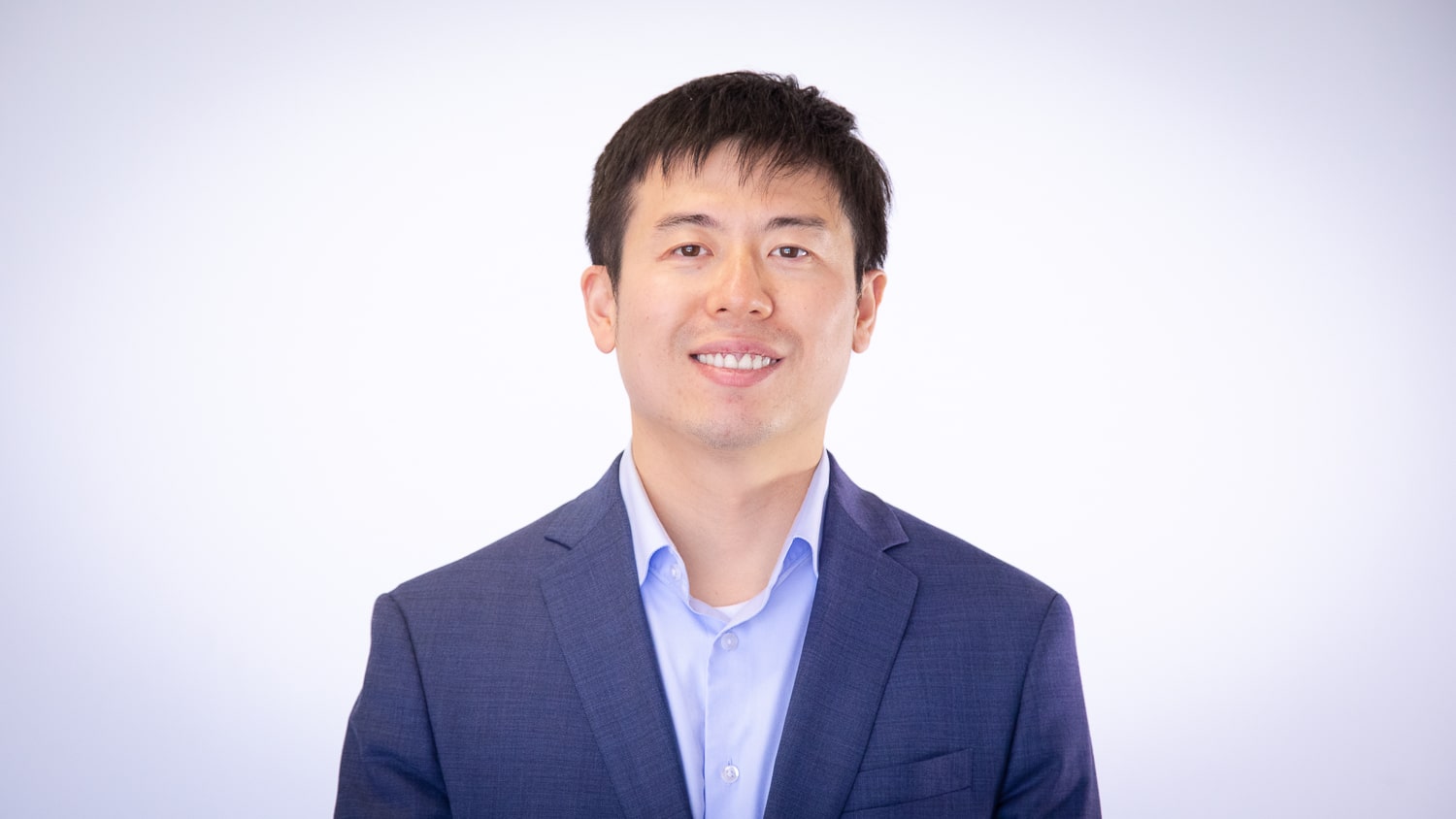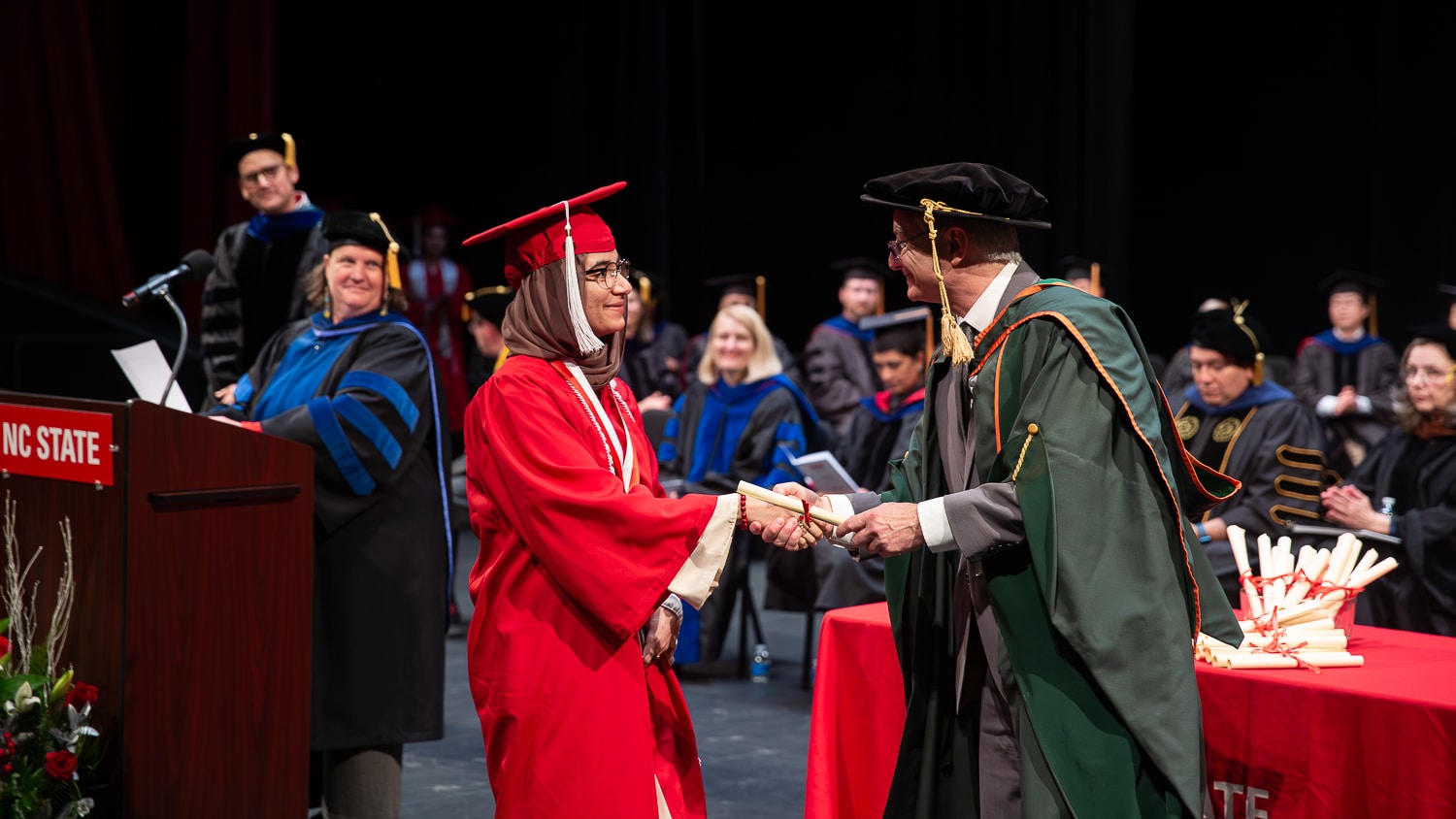Finding New Uses for Sustainable Material

By Sarah Stone
Brian Edwards has always loved working in a lab and conducting research. As a senior scientist for Eastman’s textile application development team, it’s something the Wilson College of Textiles alumnus gets to do nearly every day.
“I personally get a whole lot of fulfillment out of being a hands-on scientist. I like to have access to a lab, and I like to be able to perform experiments,” Edwards says.
His main role at Eastman is to plan and execute experiments to understand the fundamental properties of the company’s Naia and Naia™ Renew yarns and staple fibers. He then uses the results of his experiments to determine new uses and applications for Naia. Right now, this yarn is principally used in womenswear and home textiles.
Edwards says his work in the lab is made even more rewarding by the positive impact it has on the environment. 60% of Naia Renew fiber is made up of cellulose derived from sustainably-sourced wood pulp. The other 40% of Naia™ Renew fiber is derived from hard-to-recycle waste materials. Those waste materials are broken down into simple molecular building blocks that are reassembled into valuable molecules and used to create new products like Naia™ Renew. Naia™ has also received third-party certifications for compostability and biodegradability in a variety of settings.
“Seeing how we can tackle the big waste challenges that the textile industry is facing has been really exciting,” Edwards says.
The passion for sustainability that guides Edward’s career has its roots in his Wilson College education. He’s a triple graduate of the college, earning a Bachelor of Science in Polymer and Color Chemistry (PCC) in 2008 and a Master of Science in Textile Chemistry in 2010 before getting his Ph.D. in fiber and polymer science (FPS) in 2014.
“The way things have historically been done in the textile industry and the way things are moving, trying to reduce water or find safer chemistries, that’s a theme that you hear throughout your undergraduate coursework,” he says. “Then, I had a senior research project that was related to understanding how certain textile dyes can be broken down in the human body into molecules that can affect your DNA. Working on that project really sparked something for me.”

Projects and research like that are what Edwards says motivated him to enter the PCC program.
“Applying the theories and principles that you learn in all types of chemistry courses to solve real-world problems that are faced by an actual industry was much much more satisfying to me,” he says. “When I could learn about it through the experience of synthesizing a dye molecule, or synthesizing a polymer, or dyeing or printing a swatch of fabric, or spinning a fiber in the lab, it just made all of those theories and principles that I learned in chemistry much more tangible.”
Edwards used his doctoral dissertation to hone his expertise in sustainability. He developed a process to apply flame-retardant chemistry to textiles that used less water and less energy than standard industry procedures.
“I think the most important thing I learned in graduate school is how to thoughtfully apply the scientific method to answer questions and solve problems,” he says.
This lesson made him the perfect fit for his first job – a material innovation engineer for Patagonia. There, he researched technologies that could reduce their products’ environmental impacts, improve technical performance, or both.
“Patagonia is one of those aspirational places for people who are wanting to work in a brand and focus on sustainability.”
“The way things have historically been done in the textile industry and the way things are moving, trying to reduce water or find safer chemistries, that’s a theme that you hear throughout your undergraduate coursework.”
Ultimately, however, Edwards made the switch to Eastman because of the opportunity to diversify his understanding of sustainable materials.
“Eastman serves so many different markets and I’ve had a lot of opportunity to learn about other products and technologies,” he explains. “It’s a great place to work for someone who’s passionate about chemistry and polymer science. What this company does has a really direct correlation to what I learned at the College of Textiles.”
The Wilson College Educates Future Leaders
Brian Edwards is just one member of the Wolfpack recently named a “Future Leader“ the American Association of Textile Chemists and Colorists. Out of the six young professionals who earned the association’s “Future Leaders Award,” five have a degree from the Wilson College of Textiles.
- Categories:


